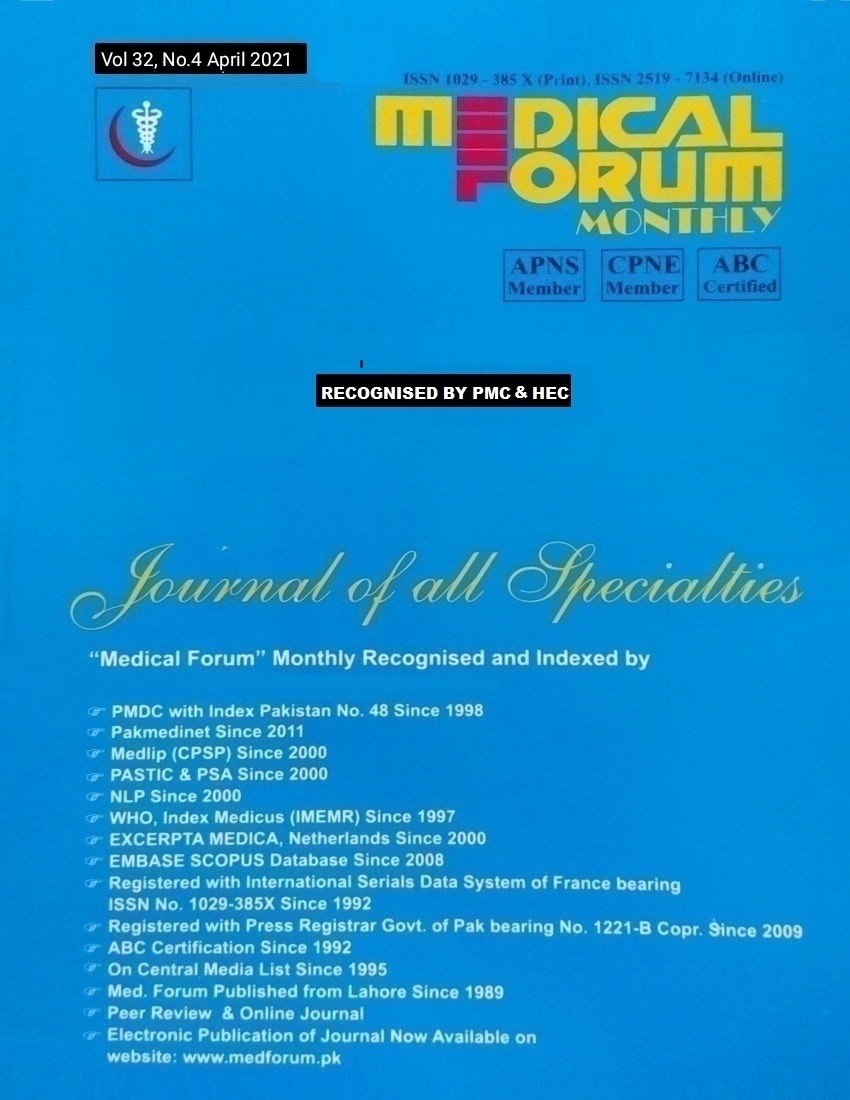
17. Effectiveness of Various Treatment Options in the Management of Gallbladder Stones and Related Acute Conditions
Gul Sher Khan, Abdul Ghafoor, Asif Mehmood and Rafi Ullah
Abstract
Objective: The purpose of this study was to compare and to assess the differences in the clinical outcomes of surgical versus laparoscopic cholecystectomy, endoscopic procedures (ERCP), percutaneous cholecystectomy, percutaneous aspiration (PA) and medical measures in the management of gallstone and related acute conditions.
Study Design: A comparative and retrospective study.
Place and Duration of Study: This study was conducted at the Department of General Surgery Khalifa Gul Nawaz Teaching Hospital Bannu between August 2019 and June 2020.
Materials and Methods: A total of 269 patients were included in the study, with the age ranged from 30 to 85 (mean 57.5) years. Data were collected from the charts and computer record of the prospective patients, admitted from Jan 2013 to Dec 2015. Statistical analyses were used to calculate the risks of in hospital mortality and morbidity, to detect the statistical differences among the treatment types, age groups, length of hospital stay and the readmission frequency among the different treatment types.
Results: Open surgery is a gold standard, effective, definitive and safe treatment modality in the management of gallstones and related acute conditions. Laparoscopic surgery (lap chole) is, although a gold standard and a vogue with surgeons but it is not applicable and successful in all cases of gallstones and related conditions, for which open surgery comes as a definite treatment option. The age of the patients affects the mortality and the duration of hospital stay after every type of treatment for gallstones and related acute conditions. Percutaneous cholecystectomy or percutaneous aspiration (PA) was associated with highest risk of death and length of hospital stay. ERCP (endoscopic retrograde cholangio-pancreatography) was related to a shortest hospital stay .There were more deaths in the medically treated patients. There were more readmissions in the delayed types of procedures. The risks of death and the probability of readmissions were not affected by the gender of the patients.
Conclusion: Surgery is a gold standard, effective, definite and safe in the management of gallstones related acute conditions. Laparoscopic cholecystectomy is mainly used in young fit patients, usually for simple cases of gallstones/cholecystitis. The success rate of the procedure increases with the experience of the surgeon. Surgically unfit and high risk patients are treated conservatively with medicines or through ERCP, percutaneous cholecystostomy or PA. These techniques have limitations. They are temporizing and palliative procedures, with a high recurrence rate of symptoms.
Key Words: Acute cholecystitis (AC), Endoscopic Retrograde Cholangiopancreatography (ERCP), Percutaneous aspirapion (PA).
Citation of article: Khan GS, Ghafoor A, Mehmood A, Rafi Ullah. Effectiveness of Various Treatment Options in the Management of Gallbladder Stones and Related Acute Conditions. Med Forum 2021;32(4):67-71.
